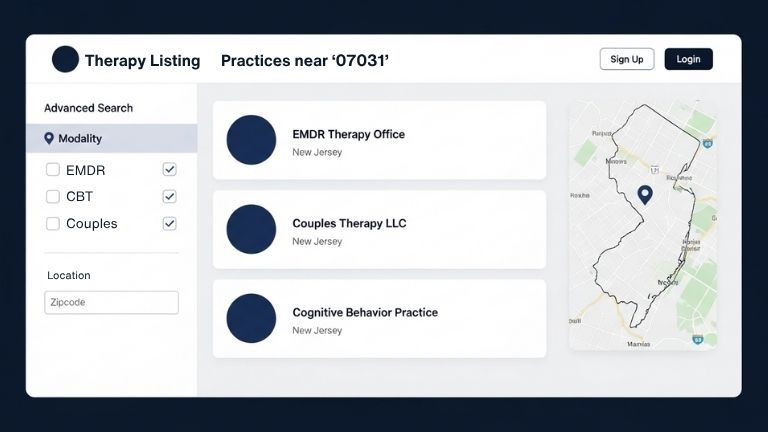Listen to this article:
Content marketing is no longer optional (sorry, I know). It’s how you communicate your business’s value and build trust with total strangers (called cold prospects) to help them along their decision-making journey throughout the customer lifecycle.
It’s also how you generate qualified marketing and sales leads who are ready to talk to you. In today’s hyper-competitive and AI-dominated digital landscape, small business owners who invest in genuine, strategic, and helpful content stand out and connect with people looking for answers.
I’m going to explain where great content comes from, why it works, and how professional service providers can begin building a scalable content engine that supports their long-term growth.
Table of Contents
- What Is Content Marketing?
- Where Does Great Content Come From?
- Content Marketing Is More Than Being Helpful
- How to Find Inspiration for High-Converting Content
- Content Marketing Is No Longer Optional
- The Difference Between Content Marketing vs. Digital Marketing
- The Difference Between Content Writing vs. Copywriting
What is Content Marketing?
Content marketing is the process of communicating your business’s value to customers through the use of resources, digital or otherwise, that support their decision-making journey throughout the customer lifecycle.
Now, there were a couple of technical terms I just mentioned in that paragraph:
- Value: Comes from your value proposition; a statement that clearly outlines what your business offers to customers (in terms of providing a solution to a problem or need), how you deliver on that offer, and what distinguishes you from your competitors.
- Customer Lifecycle: The stages a customer goes through on their journey from prospect to loyal customer. From acquisition to retention, each stage should incorporate different marketing and sales messaging to solve the problems the customer faces at that point in their lifecycle.
Here’s a full marketing glossary if you need!
Where Does Great Content Come From?
Great content is rooted in relevance. Authoritative, trustworthy, and high-performing content starts with a deep understanding of your existing or prospective client’s business challenges.
To create content that resonates, do the following:
- Identify the recurring questions and blockers your clients face.
- Ask yourself: “What do I know that can help them solve this problem, or make a better decision?”
- Shape your content around those specific problems using your domain expertise.
Your content should strive to meet the reader where they are, using your expertise as the guide. Don’t speak on subjects for which you aren’t qualified.
Content Marketing is More Than Being Helpful
Content marketing goes beyond simply educating your audience; it’s about guiding their thinking in a way that creates clarity, trust, and connection with your business. The most effective content doesn’t just answer a question; it contextualizes your value within your reader’s goals. They need to know what you’re saying to make a decision on the next step.
This means thinking about content as a conversation, not a lecture. If someone is searching for answers about why their lead pipeline is slow or how to scale client onboarding, your content should reflect not only that you understand their concern, but that you’ve seen it before and have a distinct approach that could work for them. In this way, your content becomes a preview of working with you.
Ask yourself the following questions:
- Are you addressing common misconceptions in your field?
- Are you showing prospects how your approach is different or more sustainable?
- Are you easing doubts or fears that they may not even know how to articulate?
That’s where your experience becomes irreplaceable, and what AI-generated content can’t replicate. When your content reflects your firsthand experience and your unique process, it becomes persuasive. And at the end of the day, that’s the goal of content marketing.
How to Find Inspiration for High-Converting Content
Some of your best content ideas are probably hiding in your inbox.
Scan through the following:
- “Urgent” emails from clients at 2 AM.
- Common sticking points brought up during your onboarding phase.
- Repeated feedback from your discovery calls or following proposal meetings.
- Objections and comments from decision-makers’ redlines.
If you’re a new business owner, you’ll need to be proactive and have conversations with actual people who represent your ideal audience. Listen to their language and document their patterns. These insights form the basis of a scalable, research-backed content strategy.
Next, take what you’ve heard and generalize it into reusable, helpful content for other folks like them. Ensure you protect your client’s confidentiality (never use the client’s name or share proprietary information that could breach an NDA or contract). You’re using this intelligence from them to create templatized resources like FAQs, blog posts, guides, or reels that guide someone to a better understanding of your approach and services.
Once you have inspiration, you’ll want to back it up with evidence of search intent:
- Keyword research to confirm interest (common search queries/terms).
- A review of what your competitors are publishing (even if it’s not great).
- Industry trade publications that identify similar concepts or also pose similar questions.
- Community threads, LinkedIn conversations, or podcasts your audience listens to as a way to identify whether these questions are being answered, and where.
If you can’t find such evidence about your potential topic in the above, don’t take that as an indication that you shouldn’t move ahead. This is merely a helpful way to benchmark the other type of content that’s being published. But if you are confident in your topic and its relevancy and usefulness, then go ahead and publish. Track its performance across your communication channels. Best case scenario, you created something no one else even thought of yet.
If you’ve ever been on a call and wished you had a video, diagram, or resource to explain something, create it.
SEO is different now, and you’ll want to hire someone or learn SEO writing so you can be found online. Check out SEO Writing: Beginner’s Guide to Being Found Online for a review of what you need for search engines and AI search. The short answer is backend structure and reformatting for audio, video, visual, text, etc.
Content Marketing is No Longer Optional
With the rise of AI-generated summaries in traditional search results, organic blue links aren’t commanding as much attention and follow-through.
According to a July 2025 Pew Research study, users are far less likely to scroll or click when presented with a comprehensive AI overview response at the top of their search results page.
That means:
- Your content should be formatted to appear in search snippets and summaries.
- It must clearly answer the main question early (like at the top of your page).
- Your content must go deeper to serve the reader who does click through to your page.
According to Google Search Central’s support documentation on how AI features work in Search, it rewards original, structured, and authoritative content, especially from real people and businesses.
To stay visible, your content plan should 100% incorporate the following as a baseline:
- Website content (optimized for structured data and snippets).
- Off-site content (guest posts, directory listings, podcast appearances).
- Social content (short-form video, infographics, or quote cards).
And yes, backlinks still matter. But nothing beats original thought and genuine value.
The Difference Between Content Marketing vs. Digital Marketing
Content marketing falls under the umbrella of digital marketing.
While digital marketing focuses on promoting your value through effective messaging across online channels (e.g., PPC, SEO, email, and social media), content marketing focuses on value-first education and storytelling to draw in customers. It shows up in digital formats like blogs, videos, webinars, podcasts, and downloadable resources, but it can also extend to traditional formats. Examples of traditional formats include physical whitepapers and articles in industry magazines, conference presentations, or printed guides.
The beauty of content marketing is that it creates digital assets that are reusable, shareable, and that compound value over time. While an ad disappears once the budget runs out, a well-written blog article or evergreen video can generate leads for years. That’s why it’s considered a long-term investment.
The Difference Between Content Writing vs. Copywriting
Content writing and copywriting are used interchangeably sometimes, but they serve very different functions:
- Content writing educates, informs, or inspires. Its goal is to build trust and awareness.
- Copywriting persuades. Its goal is to drive a specific action (click, sign up, schedule, buy).
According to the MarketingSherpa Blog on Copywriting, “the content should have its own value proposition.” The title of this article, for example, was written with a copywriting mindset. This was to capture your interest and motivate you to click through to the article. But the body of this article used content writing principles and promised that if you read the whole thing, you would walk away with an understanding of why content marketing is important in today’s digital landscape.
As tools like AI make content generation easier, your differentiation will come from how accurate, relevant, and human your content feels. The most effective content balances teaching with selling in a way that naturally moves the reader forward in their decision-making process. Again, read SEO Writing: Beginner’s Guide to Being Found Online to understand what you need to be doing when actually creating content that ranks.
What Content Have You Built Already?
We work with consultants, creatives, professional service providers, and teams in higher education to lean into their expertise and create content that generates organic, qualified leads.
Schedule a discovery call to learn how to translate your value into meaningful resources that inspire prospects to move ahead.



